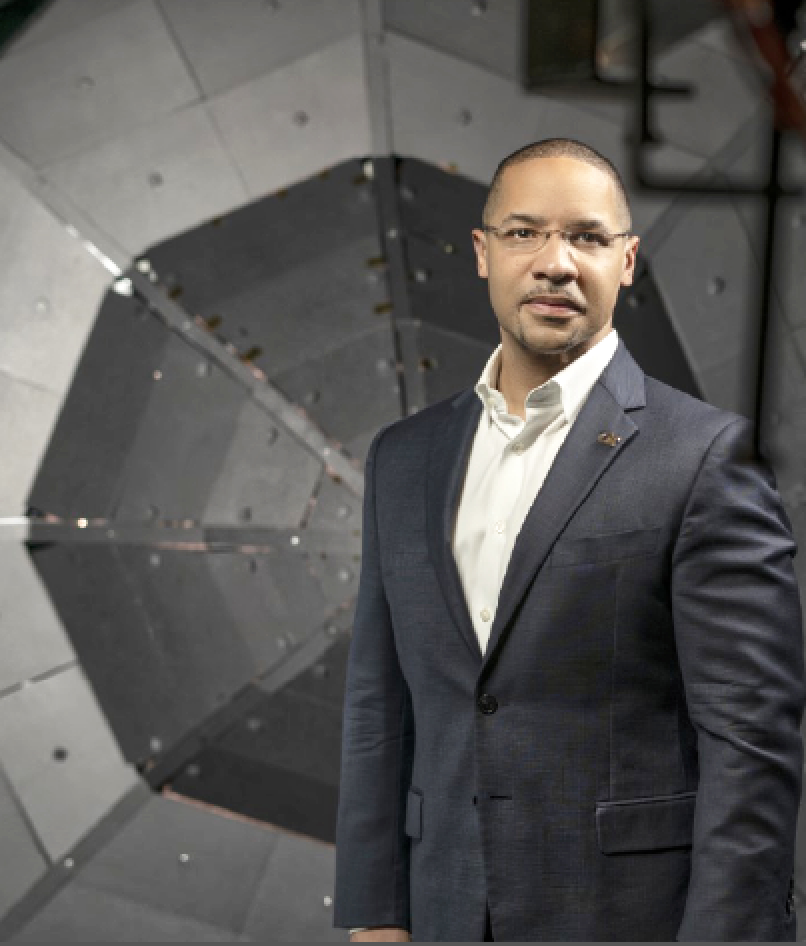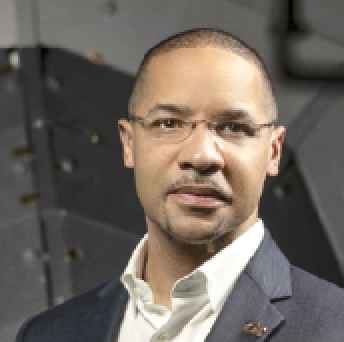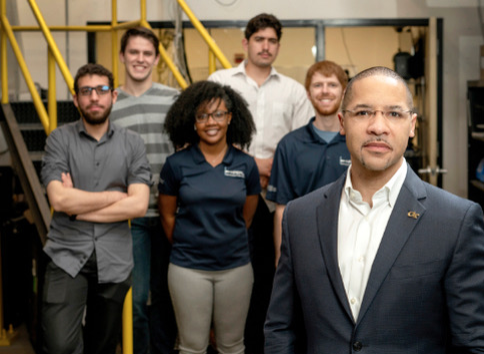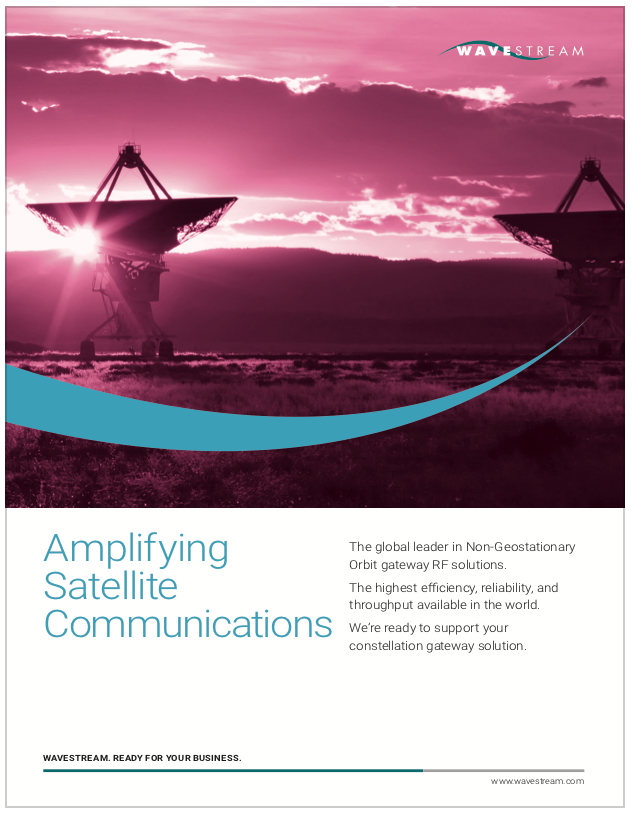JANUS Director on academia uniting to tackle the ground testing challenge

For America to achieve its ambitions for deep space exploration, it will need high-power electric propulsion to carry crews and cargo farther into space and keep them on mission longer but testing these next-generation thrusters runs into problems on the ground, where infrastructure issues unique to Earth make it difficult to predict performance in space.
For the first time, NASA is bringing together top U.S. researchers in space propulsion and related engineering fields to tackle this challenge.
NASA recently announced the creation of the Joint Advanced Propulsion Institute (JANUS) with $15 million in funding, naming Mitchell Walker, Professor in the Daniel Guggenheim School of Aerospace Engineering at Georgia Institute of Technology, its first director.
Professor Walker’s primary research interests lie in electric propulsion, plasma physics, and hypersonic aerodynamics/plasma interaction.
He has extensive design and testing experience with Hall thrusters and ion engines. Walker has performed seminal work in Hall thruster clustering and vacuum chamber facility effects. His current research activities involve both theoretical and experimental work in advanced space craft propulsion systems, diagnostics, plasma physics, helicon plasma sources, magnetoplasmadynamic thrusters, and pulsed inductive thrusters.
As one of NASA’s newest Space Technology Research Institutes, JANUS will draw upon an interdisciplinary team of 17 researchers from nine partner universities — all focused on enabling and proliferating high-power electric propulsion systems.
Starting in October of 2021, JANUS will tackle core challenges to electric propulsion ground testing including pressure in the vacuum facility, material erosion and deposits, and electrical circuits that don’t exist in space the way they do on Earth.
For the last 25 years, electric propulsion researchers have known that ground testing presented challenges. Until now, however, there has never been a dedicated group of researchers across multiple fields from different universities working together to solve the problem.
Professor Walker on the challenge...
“We are bringing together the people who are experts in all the pieces of the problem,” explained Walker, a lifelong engine enthusiast and 20-year research veteran of electric propulsion, plasma physics, and plasma-material interactions. “Together, we as researchers can work side by side to develop a complete understanding of what to do next. We can then give guidance to the electric propulsion testing community, not just NASA, but the Department of Defense, and industry suppliers. If we get this right in the U.S., it could result in an international standard for how to do the testing and will move everyone forward.”
”It will take considerable infrastructure and expertise to improve how we test and mature these types of systems. The JANUS framework aims to help solve this challenge,” added Claudia Meyer, NASA’s Space Technology Mission Directorate program executive over space technology research grants.
In a wide-ranging discussion with SatMagazine, Walker discusses the technical hurdles in electric propulsion ground testing and how JANUS is working collaboratively to build a model to predict how new more powerful electric propulsion systems as NASA and commercial space partners eye missions to the moon and Mars.
Professor Walker, what are the main limitations of today’s ground-based testing of electric propulsion systems?

Professor Walker
The challenge is that in existing facilities we don’t know how to accurately test electric propulsion devices big enough to push spacecraft and cargo to their destination within the time limits of future NASA missions. JANUS will address this challenge by ensuring accurate ground testing and data translation to the space environment so that high-power electric propulsion can enhance space travel.
Three issues really slow us down. Number one is that these thrusters are designed to operate in the vacuum of space, where there’s little to no pressure outside. Ground-based test facilities attempt to pump out all the gas while the thruster is operating, but there is always some residual gas in the test facility. So, the gas left over in the facility interacts with thruster operation, and this reduces our confidence in the prediction of performance in space. The question is, “How do we take the data that we collect on the ground where the pressure is high, and extrapolate it to predict what’s going to happen in space?” When the thruster is small, and the test facility is large, we do a great job predicting the performance in space.
However, when you contemplate next-generation electric propulsion systems that will have 50 or even 100 kilowatts of power, we don’t currently have the test facilities or methodologies to make high-confidence predictions of thruster performance in space.
The second problem is contamination. The thrusters are incredibly efficient, but they have very low thrust and must operate for thousands of hours in space. Thus, their lifetime requirements are drastically different than conventional chemical engines that only need to operate for a few minutes.
To quantify the system’s reliability, you would like to operate the thruster on the ground for a comparable amount of time. The problem is, when you’re running the thruster on the ground, thruster lifetime is impacted by facility contamination.
High-energy ion beam from the thruster can backsputter test facility wall material onto the thruster. Test facilities are lined with graphite to minimize this effect, but experiments still show deposition, layering, flaking, and spalling of films deposited on thruster surfaces.
These processes will never occur in space but complicate our measurements of erosion as well as lead to electrical shorting between components. The net effect of contaminant coating of the thruster is reduced confidence in predictions of thruster lifetime.
The third issue involves electrical circuits between the thruster and test facility. In space, we ionize the propellant — you have an ion and an electron. The high-speed ion leaves the thruster to generate thrust, an electron emitted from the neutralizer eventually catches up, neutralizing it. It works perfectly in space.
However, on the ground, the ion and electron leave the thruster and hit the conductive metal wall of the test facility. The charged particles electrically couple the thruster to the test facility. The effects of this interaction include low resistance paths between thruster surfaces and the test facility, modified electron mobility, and facility-enhanced beam neutralization. These processes only occur in the ground-test facility, thus reducing confidence in predictions of discharge stability and performance in space.
What level of performance leaps will these new electric propulsion systems need to achieve to support deep space missions?
Professor Walker
For shuttling people or cargo around the moon or to Mars, you need much higher power thrusters. Most systems NASA is looking at are at the megawatt level. We currently build engines at the five to 10-kilowatt level. So, we need to go up at least an order of magnitude higher — approaching 100 kilowatts of power. If we could cluster some of these engines together, we could deliver the power needed for those kinds of missions.
Is this the first time that academic researchers have come together at this scale to address this challenge?
Professor Walker
Yes. I think it has not occurred before because the challenge is so unique that no individual research group has all the talent or infrastructure to attack it. Most of us have chosen to focus on one part problem: the pressure part, the contamination part or the electrical part. The only way we can successfully create a predictive model that addresses all these areas is to pull everyone’s intellectual and infrastructure resources together.
Why is it so important to tackle this as a community versus continuing to do disparate research?
Professor Walker
At the end of the day, the goal is not to test thrusters. Instead, the goal is to create a predictive capability that can extrapolate ground- based thruster performance measurements to the performance of the thruster in space. We have to bring together our best thinking in each area if we want those models to be truly predictive. It’s really the modeling that is pulling the answer together, and if you only have disjointed pieces, it will be difficult to reach the goal.
How are you structuring JANUS to leverage nine research universities?
_____________________________________________
Who’s Who in JANUS JANUS partner
universities include...
Georgia Institute of Technology (Mitchell Walker,
Maryam Saeedifard)
University of Michigan (John Foster, Alec Gallimore,
Alex Gorodetsky, Benjamin Jorns)
University of California, Los Angeles (Richard Wirz,
Jaime Marian)
University of Illinois (Huck Beng Chew, Deborah Levin,
Joshua Rovey)
Colorado State University (John Williams, Azer Yalin) Pennsylvania State University (Sarah Cusson)
Stanford University (Ken Hara);
University of Colorado Boulder (Iain Boyd);
Western Michigan University (Kristina Lemmer)
Clark Atlanta University (Issifu Harruna)
Chicago State University (Valerie Goss)
City Colleges of Chicago (Phillip Vargas).
Industry partners include The Aerospace Corporation,
Aerojet Rocketdyne and Busek.
______________________________________________
Professor Walker
That was the most challenging part of putting together the JANUS effort. We need everyone’s contributions recognized, and we fully leverage the facilities.
First, we had to all agree on the three big problems. Then, we agreed to bring the universities together to share their resources, as well as have the modelers in the room before experiments started so we could understand what was being measured, including the level of uncertainty required to gain confidence in the model results.
We also brought in uncertainty quantification — that is, the things in the model that you must get right. And then, based on the sensitivity of the model, deciding where we should direct the research effort.
Will you bring the researchers together?
Professor Walker
The entire membership of JANUS will meet twice a year, a day-long virtual meeting every six months and one in-face review meeting per year. To enhance engagement, the location of the entire membership meeting will rotate between the lead institutions. Georgia Tech will host a JANUS student/postdoc retreat on the GT campus to promote collaboration among the labs and create a common bond for the diverse group. We will also share and rotate graduate and undergraduate students between projects during the summer.
Ideally, we want the graduate students to continually collaborate, sharing emails 24x7 and serving as the intellectual “glue” for JANUS. When you get the grad students talking, good things are going to happen. For this effort, we have 18 grad students and five postdocs.
How are you working with the commercial partners such as Busek, Aerojet Rocketdyne and Aerospace Corporation, who all serve on the JANUS Advisory Committee?
Professor Walker
JANUS has an external, independent advisory board that provides a top-level assessment of research progress and resource utilization to balance the strong academic perspective of the team. The board includes members from commercial companies, government, non- profit organizations, and academia. We will meet with them several times per year to share what we are doing, what we have learned, and where we are going next. There will be public-private partnering that comes out of JANUS, but we’re still sorting out suitable mechanisms for those opportunities. Having commercial entities advising JANUS is essential. Even though NASA drives many U.S. space activities, the people, the infrastructure, and a lot of the technology development are accelerated by commercial and defense needs. In many ways, the commercial world is driven by “How do you quickly get something reliable built and launched that’s needed today?” They bring a lot of insight. NASA will need to contract with these commercial suppliers to get high-power electric propulsion designed and built, so it’s important that commercial partners are included at the beginning of the process.
What novel technologies or process approaches are you most excited about that offer the greatest promise for creating a model for testing propulsion systems on the ground?
Professor Walker
We went around and around about this problem. The beautiful thing I like about this team is the depth of their expertise; many members have been engaged in this problem for well over a decade, most for multiple decades. The team understands that there is no silver bullet- that’s going to fix this. We didn’t approach it like that. We said, “Okay, let’s get a hold of the model, the overarching model that’s going to predict performance, contamination, and electrical coupling, and let’s look at the results and understand where we need to have more fidelity in our measurements and more physics in our models if we want more confidence in our predictions.” Based on that, we will adjust the focus of our research. This approach will enable us to move the needle forward for system-level predictions.
What do you need to get right with the model?
 Professor Walker and team members.
Professor Walker and team members.
Professor Walker
When we build these thrusters, we want to have high confidence that they will meet the performance requirements. The way to do that is to have a detailed, physics-based model that has been validated with high-quality data. In this work, there are parts of the existing models that need to be enhanced if we’re going to do that.
Specific areas that we need enhancements include 3D instabilities in the plasma, deposition of sputtered wall material onto components during ground tests, and understanding the electrical circuits, composed of the beam plasma and conducting vacuum facility walls, that affect thruster operation and the power processing units.
Is there a timetable that JANUS is looking at for delivering any actionable findings?
Professor Walker
By the end of the fifth year, we aim to have a predictive engineering model framework for making probabilistic assessments of in-space performance and lifetime of high-power electric propulsion, new test standards and requirements for high-power electric propulsion testing, procedures and techniques for facility design and upgrades to meet new testing requirements, as well as training the next generation of engineers and scientists to implement high- power EP.
Is the engine propulsion market growing dramatically given the increased focus and investment in space?
Professor Walker
The electric propulsion market has exploded in the last decade. Ten years ago, there were about three companies that did electric propulsion; today, we have more than 15 companies, and it seems as though a new one stands up every day.
What’s amazing is they all have customers. This is being driven by the space economy and our space-based global infrastructure. Countries, organizations, and people no longer install telephone poles and lay cables in the dirt. Instead, an entity purchases a satellite, distributes phones, transmitters, and receivers, and you have an instant data infrastructure that can deploy over an entire country that is resilient to political upheavals and natural disasters.
Another driver is the rapid rise in on-orbit sensing, where smallsats can now take pictures worldwide. When a large container ship blocked the Suez Canal this past March, we had video feed with a couple of hours. The feed wasn’t from CNN or a helicopter, but from a Planet Labs satellite, which also measured how many other boats were being blocked and what cargo was on the boats, and how the incident impacted ports and mines around the world.
You can now watch the global economy in real-time due to satellites. The space economy is exploding and we’re getting new capabilities every day. If you look at many of these new companies, you will see graduate students and university professors who have taken IP developed with NASA funding and are spinning off their innovations into the commercial space market.
What do you want readers to know about this effort?
Professor Walker
That we are aware of the challenges that exist around building the next level of spacecraft assets — and the propulsion needed to get them into orbit. We are listening and will share the advances from JANUS so that we can make this new space future a reality. I’m incredibly proud that my colleagues have trusted me in this effort.


